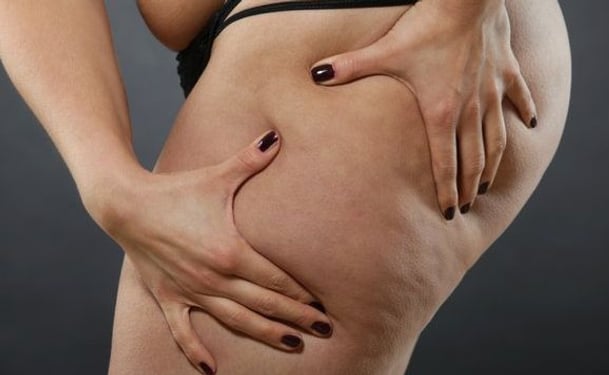Varicose veins are visually unappealing swollen veins above the skin surface. They result from decreased elasticity of the vein walls, and increased and prolonged pressure inside the veins. Most of the time, the superficial veins of the legs are involved. Although the exact mechanism of varicose vein development is poorly understood, it is postulated that varicose veins occur due to incompetent valves. Veins have valves that keep blood traveling in one direction and prevent backflow. When these valves are incompetent, they are unable to meet properly, thereby allowing the backflow of blood and the enlargement of the veins below the valve. Note that the normal blood flow is back to the heart, meaning upward. With incompetent valves, the blood flow is downward, due to gravity. Stasis of blood occurs below the valve. Therefore, you could predict where the malfunctioning valve is by noting where the varicose veins begin, relative to your head.
Pregnancy
With pregnancy, there is an increased pressure inside the veins, leading to decreased blood vessel support. Unfortunately, the pregnancy-related reduction in vessel support is not recovered. If you are pregnant and have varicose veins, you can elevate your legs, especially if you suffer from itching or pain.
Obesity
With obesity, there is an increased pressure in the abdomen, due to fat deposition. This means the venous pressure in the legs also has to increase in order to be able to move blood forward, toward the heart. This leads to valve incompetence and the development of varicose veins.
Lack of Exercise
Lack of exercise in itself could predispose someone to varicose veins. Remember that muscle contraction is essential in pushing blood toward the heart. Without exercise, there is no muscle contraction, which leads to stasis of blood and varicose vein formation.
Exercising regularly can help tone your muscles and facilitate better blood flow. Exercise is particularly important when you're obese, because it helps decrease weight. With a decrease in weight, the pressure imposed on your legs is not as much, thereby easing varicose vein symptoms.
Prolonged Standing
When you stand for a long time, you do not contract your leg muscles. Moreover, due to gravity, the blood pools in the dependent portion of the legs. These factors contribute to varicose vein formation. If your job requires prolonged standing, try to flex or contract your leg muscles regularly, or move around once in a while. This helps the valves do their function.
Varicose veins can cause discomfort and pain. If your varicose veins are not yet very prominent, try wearing graduated compression stockings. They have been shown to help correct leg swelling and facilitate the microcirculation of the legs. They also help relieve the discomfort of having varicose veins, both physically and aesthetically. You could also opt for a surgical treatment wherein varicose veins are stripped off or disconnected from the venous pathway. Other options include sclerotherapy and endovenous thermal ablation. Sclerotherapy is done by injecting a substance toxic to the varicose veins, and this forces them to die off. In endovenous thermal ablation, lasers are used to remove the varicose veins.



